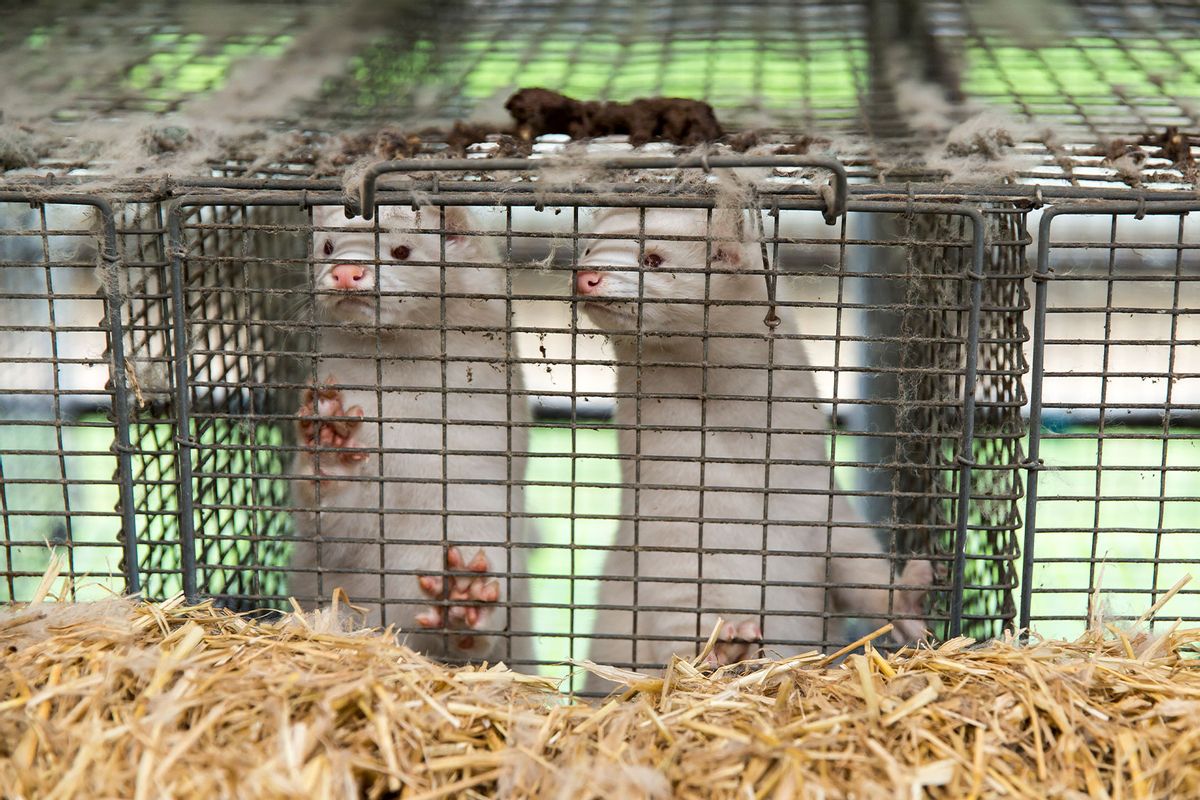Fur farms are breeding grounds for disease and a public health threat. It’s time to shut them down

In early August 2023, Finland’s food authority ordered three of the nation’s fur farms to slaughter 50,000 of their animals. The purpose was not to create new fur coats, but to stop a virus: the H5N1 influenza strain, also known as “bird flu,” which had been detected on those farms. Because Finland and Norway are already facing an H5N1 outbreak, their governments are being especially cautious, aware that fur farms — in particular, mink farms — are notoriously potent incubators for dangerous diseases.
In a worst case scenario, H5N1 or another virus could mutate in a mink and infect a human — and this is why many experts believe fur-producing facilities such as mink farms should be abolished.
According to Dr. James Keen, an expert on zoonotic diseases who studied outbreaks as a senior scientist at the U.S. Department of Agriculture, the threat posed by facilities like mink farms is simply too grave.
“Mink fur farming (as well as raccoon dog and fox fur farming) should be banned for both humane and zoonotic disease risk reasons.”
“There is a valid reason to be concerned about bird flu H5N1 creating a mutant viral strain with pandemic potential in people,” Keen told Salon by email. “Farmed mink in both Spain and Finland have now been shown to become infected with bird flu H5N1. More fur-farmed mink outbreaks will surely follow. Mink fur farming (as well as raccoon dog and fox fur farming) should be banned for both humane and zoonotic disease risk reasons.”
Keen noted how farmed mink tend to fare very poorly, fighting each other and engaging in acts of cannibalism and self-mutilation due to the intense stress of living in cramped, densely populated conditions.
“You cannot separate the inhumane conditions of factory fur-farmed mink from their susceptibility and propensity to acquire and spread infectious diseases to other mink, wild animals, or people,” Keen said. “Mink are not just more susceptible to COVID-19 and bird flu H5N1 on a molecular level, they also get sick more than other animals because of their high density, high-stress farm environments to which they are genetically, behaviorally, and physiologically maladapted.”
“Mink fur farming (as well as raccoon dog and fox fur farming) should be banned for both humane and zoonotic disease risk reasons.”
It is easy to find anecdotes supporting Keen’s observation about cruelty on mink farms. Speaking to Salon in 2021 about his experiences growing up on a mink farm, Scott Beckstead — who is now director of campaigns for animal wellness action at the Center for a Humane Economy — recalled one mink with a beautiful bluish coat that literally died from terror.
“The foreman pulled out this sapphire female, and she struggled and she screamed,” Beckstead told Salon, describing an incident that occurred in one of the last years that he visited his grandfather’s southern Idaho mink farm. “Then she went limp. She literally died. There is no doubt that she was terrified. She had watched what was happening to the mink next to her. I think, honestly, the only explanation is that she died of sheer terror.”
Even without the horrid living conditions weakening their bodies and minds, however, farmed mink would still be unusually disease prone because of what Keen earlier described at the molecular level.
“Mink are highly susceptible to respiratory viruses, which we know pass back and forth between mink and the humans working at fur farms,” Lori Ann Burd, environmental health director at the Center for Biological Diversity, wrote to Salon. “The crowded conditions they exist in at fur farms, and the close contact and handling that are part and parcel of these operations are ideal for disease transmission.”
Want more health and science stories in your inbox? Subscribe to Salon’s weekly newsletter The Vulgar Scientist.
“Mink are highly susceptible to respiratory viruses, which we know pass back and forth between mink and the humans working at fur farms.”
Keen broke down the exact science of why mink are so disease-prone. From an evolutionary standpoint, mink in the wild “are solitary carnivores. Carnivores have an inherent susceptibility to becoming infected with, but not clear, bacterial and viral infections, making them pathogen carriers.” Carnivorous mammals like mink have inherent deficiencies in their immune systems that allow them to carry zoonotic diseases (those that spread between humans and animals) for long periods of time without killing them.
“These parasites and pathogens can then be transmitted to other susceptible animals and people,” Keen pointed out. “Keeping large numbers of farmed carnivores crowded together on industrial ‘farms’ creates perfect conditions for the pathogens to be carried, to amplify their numbers, and, perhaps most importantly, to mutate into more dangerous variants.”
Keen also broke down how some nations have been far better than others in addressing the public health crisis posed by the ongoing existence of mink farms.
“As far as I can tell, there have been two types of responses to COVID-19 outbreaks and zoonotic risk in fur-farmed mink,” Keen observed, including “vigorous serious” responses such as those “in Denmark, the Netherlands, France, Spain and most EU countries where there has been mandatory testing, active surveillance and monitoring of mink and mink farmers, including euthanasia of infected herds and temporary or permanent shutdown of the farmed mink with farmer compensation.”
Yet if the Finnish government’s recent actions are any indication, there may be more of a public push to finally shut them down. Certainly there is major action occurring in the United States on that front. For example, the Center for Biological Diversity is pushing for legislation such as the Mink VIRUS Act, a piece of legislation the environmental group says is slowly gaining momentum. The bill would prohibit farming mink for their fur and compensate the farmers for their lost livelihoods.
Read more
about mink farms

